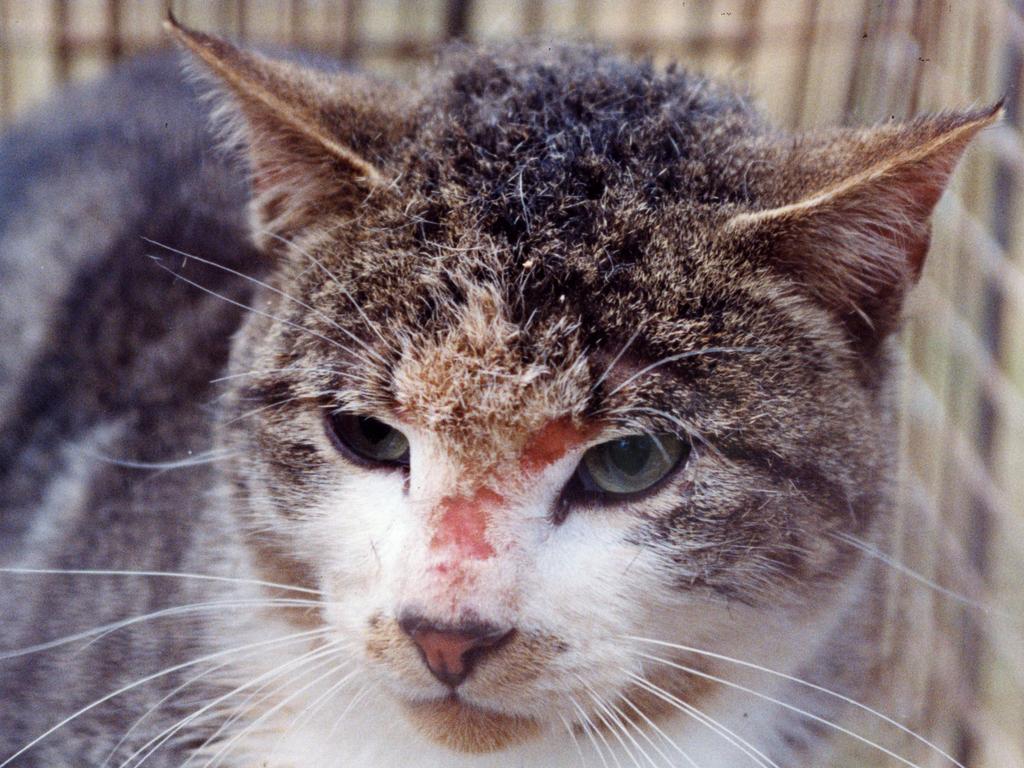Aussie pet cat laws: What changes will mean for owners
The number of cats per household may be capped under a new scheme to protect the environment. Here’s what could happen.
The number of pets per Australian household may be capped under a new nationwide scheme to protect the environment.
What’s happening: Environment Minister Tanya Plibersek announced on Wednesday that more than $60 million of taxpayers’ money would fund 55 projects to combat feral cats and protect Australian wildlife.
Feral cats kill more than 1.5 billion native mammals, birds, reptiles and frogs, and 1.1 billion invertebrates and the spread disease.
New projects and technologies – including traps equipped with artificial intelligence to detect feral cats before spraying them with a toxic gel have also been announced.
Reasearchers are also devleoping ‘drone-based thermal cameras’ and other tracking technologies to track the cats.
Here’s what you need to know:
WHAT IS THE NEW CAT THREAT PLAN?
The Government is currently considering extensive feedback on the draft Feral Cat Threat Abatement Plan, due out later this year. The plan sets new goals, including to make sure feral cats do not endanger native species that are not under threat.
The projects are specifically focused on feral cats, who damage native wildlife. The plan focuses on feral cats but also encourages responsible ownership of pet cats, for the benefit of pet cats and wildlife.


WILL THE NUMBER OF CATS PER HOUSEHOLD BE LIMITED?
Although the focus of the plan is on the threat of feral cats, Ms Plibersek has said the scheme will encourage cat owners to manage their pets properly to stop them killing wildlife.
The new measures in the drat plan would give councils the power to restrict pet numbers and ban cats outdoors.
WHY IS THERE A WAR ON FERAL CATS?
Environment Minister Tanya Plibersek said feral cats kill a staggering two billion animals per year. Feral cats have contributed to two thirds of Australia’s mammal extinctions and threaten more than 200 threatened species, including the greater bilby, numbat, and Gilbert’s potoroo.
“The Albanese Government is serious about protecting our precious native species – and that’s why we’re tackling one of their biggest killers,” she said.
“Feral cats are dangerous and ruthless predators, pushing our threatened native species like the greater bilby, numbat, and Gilbert’s potoroo, to the brink of extinction.”

HOW MUCH DAMAGE DO PET CATS CAUSE?
Experts say the harm caused by pet cats is bigger than people realise as many cats do not bring home what they kill.
According to the federal government’s draft plan, there are an estimated 5.3 million pet cats in Australia and they kill more than 500 million native animals each year.
The government has said pet cats could have a “much higher impact” on the destruction of wildlife as they boost the feral cat population by breeding and escaping.

WILL THERE BE A NIGHTTIME CURFEW FOR CATS?
As well as household limits on cat numbers, the new rules in the draft plan include night-time curfews for pet cats, desexing and registration requirements.
There is also a proposal for cat-free suburbs for native wildlife hotspots.
WHAT’S THE CURRENT STATE OF PLAY?
Cat ownership rules vary around the country. In Victoria, local councils can order cat owners to keep pets inside during specific hours.
In South Australia, an owner can have up two cats per property, while in Tasmania a person must not keep more than four cats over the age of four months on their property without a permit.
In NSW, cats are allowed to roam free but a number of council areas are putting in place policies for a 24-hour cat curfew, which means cats are not permitted to roam outside of their owner’s property boundary.
In Queensland, cats must be contained and are not allowed to roam off an owner’s property.





